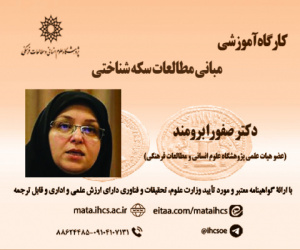رابطه بین تفکر درباره آینده و نظریه ذهن با کارکردهای اجرایی در کودکان پیش دبستانی (مقاله علمی وزارت علوم)
درجه علمی: نشریه علمی (وزارت علوم)
آرشیو
چکیده
پژوهش حاضر با هدف بررسی رابطه بین تفکر درباره آینده و نظریه ذهن با کارکردهای اجرایی در کودکان پیش دبستانی انجام شد. روش پژوهش از نظر هدف کاربردی و از نظر گردآوری داده ها توصیفی از نوع همبستگی می باشد. جامعه آماری این پژوهش کلیه کودکان پیش دبستانی آوین و گل ها شهر خرم آباد در سال تحصیلی 1401-1400 بود. به این منظور تعداد 150 نفر از این کودکان با استفاده از فرمول تاپاکینگ و همکاران (2007) و به روش نمونه گیری در دسترس انتخاب شدند و به سیاهه کارکردهای اجرایی جیویا و همکاران(2015)، پرسشنامه تفکر آینده نگر کودکان مازاچووسکای و مهی(2020) و پرسشنامه نظریه ذهن استیرنمن(1999) پاسخ دادند. پس از گردآوری پرسش نامه ها، داده های جمع آوری شده با استفاده از ضریب همبستگی پیرسون و تحلیل رگرسیون چندمتغیره به شیوه همزمان تحلیل شد. نتایج نشان داد که بین تفکر درباره آینده و نظریه ذهن با کارکردهای اجرایی کودکان رابطه مثبت و معنی داری وجود دارد (01/0>p). نتایج تحلیل رگرسیون چندگانه نیز آشکار کرد که 5/58 درصد واریانس کارکردهای اجرایی به وسیله تفکر درباره آینده و نظریه ذهن تبیین می شود. بنابراین، می توان نتیجه گرفت که تفکر درباره آینده و نظریه ذهن توان پیش بینی کارکردهای اجرایی کودکان پیش دبستانی را دارند.The Relationship between Future Thinking and Theory of Mind with Executive Functions in Preschool Children
Introduction: The present study aims to done investigate the relationship between future thinking and theory of mind with executive functions in preschool children. Materials & Methods: The research method was applied and it was descriptive-correlational type. The statistical population of this research was all preschool children studying in Golha and Avin preschool in Khorramabad city in the academic year of 1400-1401. The according convenience sampling method, 150 people by formula Tabachnick and et al (2007) of was selected as samples and they were asked to fill in behavior rating inventory of executive Function of Gioia and et al (2015), children’s future thinking questionnaire of Mazachowsky & Mahy (2020) an d theory of mind test of Steerneman (1999). After collection of questionnaires, collected data was analyzed using Pearson correlation coefficient and multivariate regression analysis. Discussion & Result: The results showed that there is positive and significant correlation between implicit beliefs of intelligence, academic achievement goals, and academic self-efficacy with executive functions (p <0.01). Regression analyses also revealed that %58/5 of variance of executive functions was explained by future thinking and theory of mind. Conclusion: Therefore, it can be concluded that future thinking and theory of mind can predict the executive functions of Golha and Avin preschool. Keywords: Future Thinking, Theory of Mind, Executive Functions, Preschool Children. Introduction The implementation functions of the umbrella are used for numerous cognitive processes, including planning, memory, attention, inhibition and self -regulation, which are controlled by the frontal lobe area of the forehead lobe in the brain. In other words, executive functions have been defined as a kind of cognitive skills that control children's behavior and thinking and include two components of behavioral and metacognitive adaptation (Menon & D’Esposito, 2022). Among the variables that can be associated with executive functions is the thinking about the future in children (Blankenship and et al, 2018). Prosocy is a set of cognitive abilities. This includes predicting possible future modes and needs (Sadeghi and et al, 2022). Another factor related to the executive functions of the mind theory is based on the research background that the theory of the mind can predict the executive functions of children (Fujita and et al, 2022; Andreou and et al, 2020; Tanha & Jalili, 2019). On the other hand, it can be said that executive functions are expanding from childhood and these functions play a key role in children's development (Rodriguez-Gomez & Talero-Gutiérrez, 2022) and skills that help the child to important aspects. Pay attention to the task and plan to finish it (Faja and et al, 2022). Therefore, conducting a study that can lead to the factors affecting the functions of preschool children is of great importance and necessity. The results of this study can be used in kindergartens, preschools, elementary schools, and other rehabilitation and rehabilitation centers. Therefore, the Education Organization is one of the beneficiaries of this study and can use the results of this study in the field of preschool empowerment. Therefore, the question has answered the question of whether there is a relationship between thinking about the future and the theory of mind and executive functions in preschool children. Materials and methods The research method was applied and it was descriptive-correlational type. The statistical population of this research was all preschool children studying in Golha and Avin preschool in Khorramabad city in the academic year of 1400-1401. The according convenience sampling method, 150 people by formula Tabachnick and et al (2007) of was selected as samples and they were asked to fill in behavior rating inventory of executive Function of Gioia and et al (2015), children’s future thinking questionnaire of Mazachowsky & Mahy







